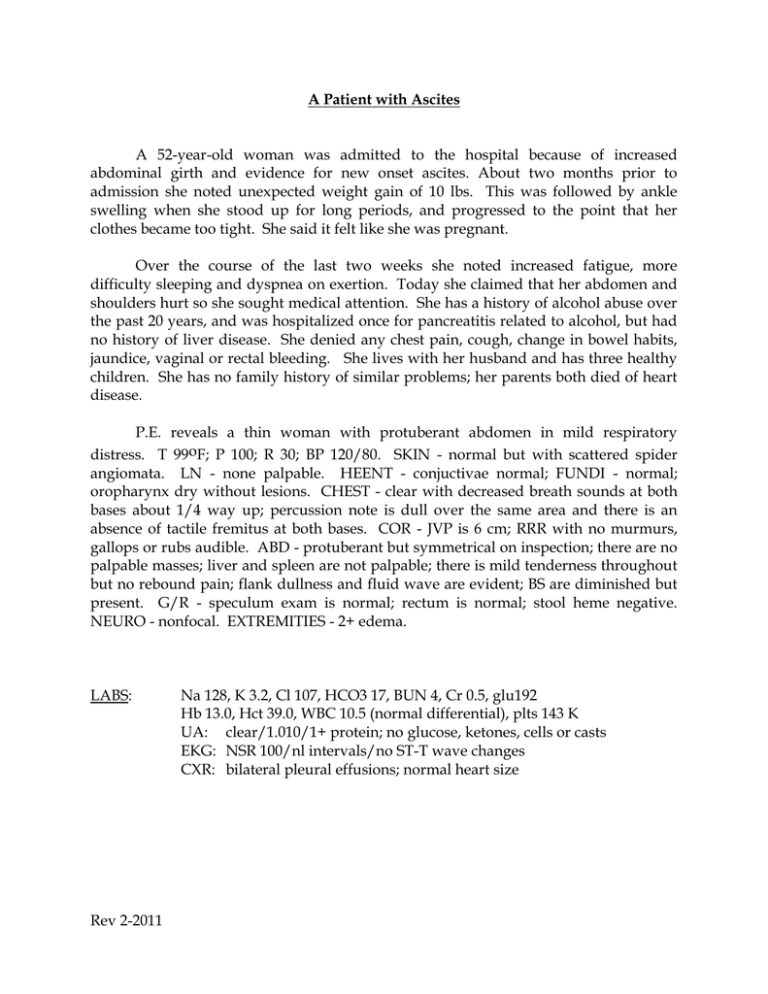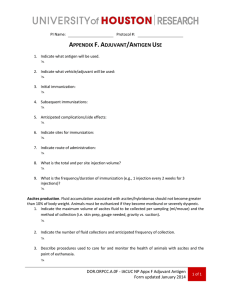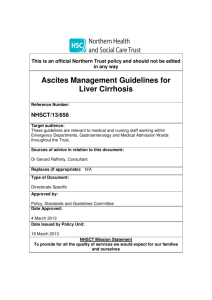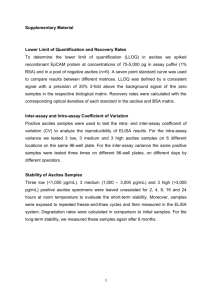Patient with ascites
advertisement

A Patient with Ascites A 52-year-old woman was admitted to the hospital because of increased abdominal girth and evidence for new onset ascites. About two months prior to admission she noted unexpected weight gain of 10 lbs. This was followed by ankle swelling when she stood up for long periods, and progressed to the point that her clothes became too tight. She said it felt like she was pregnant. Over the course of the last two weeks she noted increased fatigue, more difficulty sleeping and dyspnea on exertion. Today she claimed that her abdomen and shoulders hurt so she sought medical attention. She has a history of alcohol abuse over the past 20 years, and was hospitalized once for pancreatitis related to alcohol, but had no history of liver disease. She denied any chest pain, cough, change in bowel habits, jaundice, vaginal or rectal bleeding. She lives with her husband and has three healthy children. She has no family history of similar problems; her parents both died of heart disease. P.E. reveals a thin woman with protuberant abdomen in mild respiratory distress. T 99oF; P 100; R 30; BP 120/80. SKIN - normal but with scattered spider angiomata. LN - none palpable. HEENT - conjuctivae normal; FUNDI - normal; oropharynx dry without lesions. CHEST - clear with decreased breath sounds at both bases about 1/4 way up; percussion note is dull over the same area and there is an absence of tactile fremitus at both bases. COR - JVP is 6 cm; RRR with no murmurs, gallops or rubs audible. ABD - protuberant but symmetrical on inspection; there are no palpable masses; liver and spleen are not palpable; there is mild tenderness throughout but no rebound pain; flank dullness and fluid wave are evident; BS are diminished but present. G/R - speculum exam is normal; rectum is normal; stool heme negative. NEURO - nonfocal. EXTREMITIES - 2+ edema. LABS: Rev 2-2011 Na 128, K 3.2, Cl 107, HCO3 17, BUN 4, Cr 0.5, glu192 Hb 13.0, Hct 39.0, WBC 10.5 (normal differential), plts 143 K UA: clear/1.010/1+ protein; no glucose, ketones, cells or casts EKG: NSR 100/nl intervals/no ST-T wave changes CXR: bilateral pleural effusions; normal heart size QUESTIONS: 1. What aspects of this patient's history and physical suggest the presence of ascites? 2. What other information would you seek from this patient, and what are the possible etiologies for her ascites? 3. Describe the basic pathophysiology for ascites development . 4. Explain the patient's serum Na, K, BUN and anion gap. The patient undergoes a paracentesis. Two liters of clear ascitic fluid is removed with the following values: albumin 0.7 gm/dL, protein 1.8 mg/dL, glucose 105, amylase 20, WBC 152 (13 segs, 20 monos, 67 tissue cells); gm stain reveals no bacteria. Serum albumin is 2.5 gm/dL. 5. How does this information assist you in the determining the cause of the patient’s ascites? The patient undergoes abdominal ultrasound which reveals a small, irregular liver and enlarged spleen in addition to ascites. No abnormal pelvic mass lesions are noted. 6. What pharmacologic therapy would you initiate at this time? How would you monitor the effectiveness of your therapy in the hospital? 7. What additional lifestyle changes would assist in the successful treatment of the ascites in the long term? Rev 2-2011




